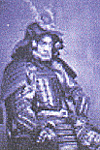 With the development of the Three Kingdoms (Silla, Koguryo and Paekche) into centralized aristocratic states, military units came to be organized on a national level and, as political institutions had been, were put under the authority of the king. In this structural sense, then, the king had become the commander-in-chief of his nation's military forces and, in fact, the monarchs of the Three Kingdoms frequently led their soldiers in person and fought alongside them in battle. Little concrete information is available on the organization of the units in the new military structure, but it is known that in Silla six divisions called chong ("garrisons") were established, one in each of the chzi provincial administrations. The six chong were commanded by generals of true-bone status (dynastic nobles), were composed of men who lived in the capital, and so had the character of elite units drawn from elite lineages. These soldiers, accordingly, looked upon their military service as an honor and privilege, rather than as a burdensome duty. In addition to this garrison army nucleus in Silla, there also were units called sodang (oath bannermen), the ranks of which are believed to have been filled by men who, something like retainers, pledged their individual services and loyalty to their commanders.
With the development of the Three Kingdoms (Silla, Koguryo and Paekche) into centralized aristocratic states, military units came to be organized on a national level and, as political institutions had been, were put under the authority of the king. In this structural sense, then, the king had become the commander-in-chief of his nation's military forces and, in fact, the monarchs of the Three Kingdoms frequently led their soldiers in person and fought alongside them in battle. Little concrete information is available on the organization of the units in the new military structure, but it is known that in Silla six divisions called chong ("garrisons") were established, one in each of the chzi provincial administrations. The six chong were commanded by generals of true-bone status (dynastic nobles), were composed of men who lived in the capital, and so had the character of elite units drawn from elite lineages. These soldiers, accordingly, looked upon their military service as an honor and privilege, rather than as a burdensome duty. In addition to this garrison army nucleus in Silla, there also were units called sodang (oath bannermen), the ranks of which are believed to have been filled by men who, something like retainers, pledged their individual services and loyalty to their commanders.
Apparently to supplement the elite units that constituted the core of the military forces of the Three Kingdoms, companies of quite young men (often in their mid-teens) were organized, like the hwarang ("flower of youth") bands of Silla. The special character of the hwarang derives from its adaptation of a traditional communal institution dating back to Silla's formative period. As had been the case with the communal assemblies of youth in the earlier clan-centered society, the hwarang bands cultivated an ethos that served the needs of the state. This is indicated by the fact, or so the evidence suggests, that the hwarang warrior youth honored the "five secular injunctions" laid down in the early 600's by the famed Buddhist monk Won'gwang. These were:
- To serve the king with loyalty,
- To serve one's parents with filiality,
- To practice fidelity in friendship,
- To never retreat in battle, and
- To refrain from wanton killing.
There was also a religious character to the activities of the hwarang, as they made pilgrimages to sacred mountain and river sites in Silla and prayed for their nation's tranquility and prosperity by performing ceremonial singing and dancing. But the most important function of the hwarang, after all, was military. In time of peace the hwarang cultivated the military arts, and in time of war they joined in the fighting at the front lines. The many tales of valor and prowess in battle told of such hwarang heroes, as Sadaham, Kim Yu-sin, and Kwanch'ang are among the most famous episodes in all of Korean history.
Each of the Three Kingdoms also organized military forces on the district or local level, and in fact the units of local administration served at the same time as the basic units of local military organization. In each of the fortresses that served as the centers of district administration, military units of fixed strength were garrisoned, and it is thought that the kjngdang institution of Koguryo was instituted as a means to reinforce these local units. Like the hwarang, the kjngdang carried on an earlier tradition of communal bodies of unmarried males, and the youthful members of the kjngdang devoted themselves to cultivating moral values and practicing the military arts. The songju, the "castle lord," of course was the commander of a districtís military contingents, and the provincial governors who exercised jurisdiction over a number of fortified district centers also doubled as military commanders. Accordingly, one cannot escape the feeling that each of the Three Kingdoms had given itself the structure of a single, monolithic military organization.
Military Organizations of Ancient Korea
Back to Saga # 95 Table of Contents
Back to Saga List of Issues
Back to MagWeb Master Magazine List
© Copyright 2004 by Terry Gore
This article appears in MagWeb.com (Magazine Web) on the Internet World Wide Web.
Other articles from military history and related magazines are available at http://www.magweb.com